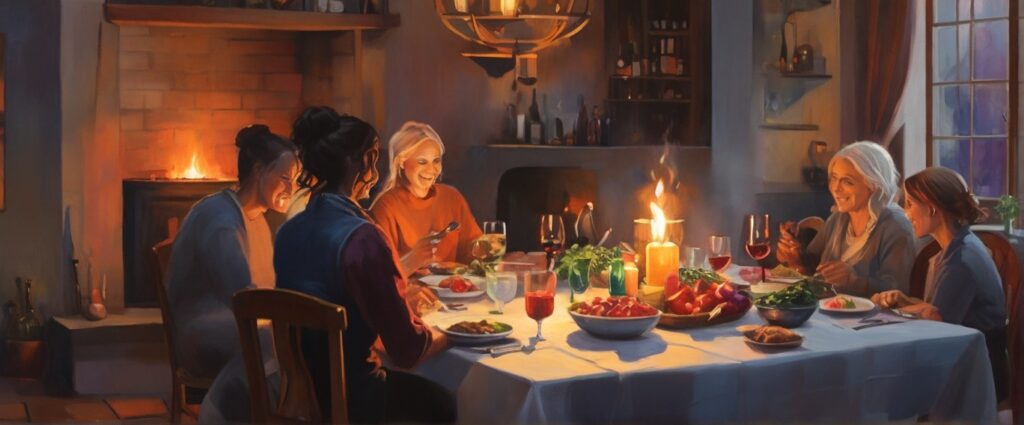
Unbeknownst to me, I had been eating smørrebrød for many years before I came to Denmark. Well, without the rye bread, maybe. Or the herring or liver paté or caviar or prawn. And technically my construction would be known as a sandwich, because of my propensity to put another slice of bread on top of the whole thing. But what’s in a name, really?
Hygge is pretty much the same deal: if no one had pointed it out, I would never have known it was a thing.
I was back in my home country, with Denmark nothing more than a vague notion, when a Dane explained hygge to me. It was a feeling of comfort, in a warm and snug living room with your loved ones, surrounded by candlelight and the gentle aromas of baked pork and caramelised potatoes. On the other side of the double-glazed windows a bleak and wintry darkness loomed, which only served to augment the fuzzy hygge warmth within as you crept further underneath your blanket, took a sip of warm gløgg, and inched closer to the gently-glowing fireplace.
Maybe it was the veil of language and the novelty of this new word from a faraway land that suspended me from my own familiar reality and made hygge glow like something in a Pulp Fiction briefcase. Like my sandwich, this was just some kind of cosiness, wasn’t it?
While cosiness sounds mundane in English, some other cultures besides the Danes have also taken a long look at it and made it something special. The Dutch call it gezelligheid. The Norwegians, Swedes and Germans have their special names. But where is their assortment of books and their candles and knitwear and cosy jumpsuits?
In the beginning it made very little sense, in an abstract and niggling way. But then, as the years wore on and the subtleties of Danish culture increasingly began to dawn on me, it ever so slowly made even less sense. In my own, admittedly frail analysis, there are two reasons that hygge became the international force majeure that it did.
One, there is an unmistakable cultural insularity about the Danes. One doesn’t get the sense of an outward-looking people seeking to explore and embrace the multitudinous influences of the world. It matters none that every culture on the planet has its own fuzzy feelings; we developed it here and it’s ours. And two, Denmark simply has a fantastic marketing team.
But regardless of how you deconstruct it, hygge has managed to become an establishment, steadily weaving and winding its way into airport bookshops and onward into a nonplussed international imagination. Yes, it has existed as a standalone concept in Denmark for ages, for reasons that are hard for me to fathom, but the English-speaking sphere has sent out its dendrites and risen up to meet it like an old friend. “Cosiness” just wasn’t enough. And the Dutch were too slow to market their gezelligheid before hygge swooped in and hijacked the fuzzy market with its quirky fairytale cuteness.
Maybe the universal void was already there, waiting for hygge to come along and rescue humanity from its malaise. Yoga, meditation and Zen Buddhism lay on a pile alongside their Birkenstock sandals and lava lamps. Here was something new and attainable, from the more familiar land of the ugly duckling and the little mermaid.
It offered a way to attain happiness and meaning through acknowledging the small and simple things. Appreciating and being mindful of the present moment, helping us face and process our anxieties and stresses. In a world where people inadvertently and often inevitably drift away from each other, it encouraged meaningful connections with family and friends, fostering a sense of belonging and togetherness.
And in contrast to the esoteric poses and chants of previous decades, it did so with the help of nothing more than some candles, a crackling fireplace and some good company.
I’ve seen some Google queries about Danish “hooga”, so let me help you out with the pronunciation: round your mouth to say oo as in boot, but say ee as in geese. That’s the Danish y. So hygge sounds closer to hig-guh than hooga. Easy peasy.
